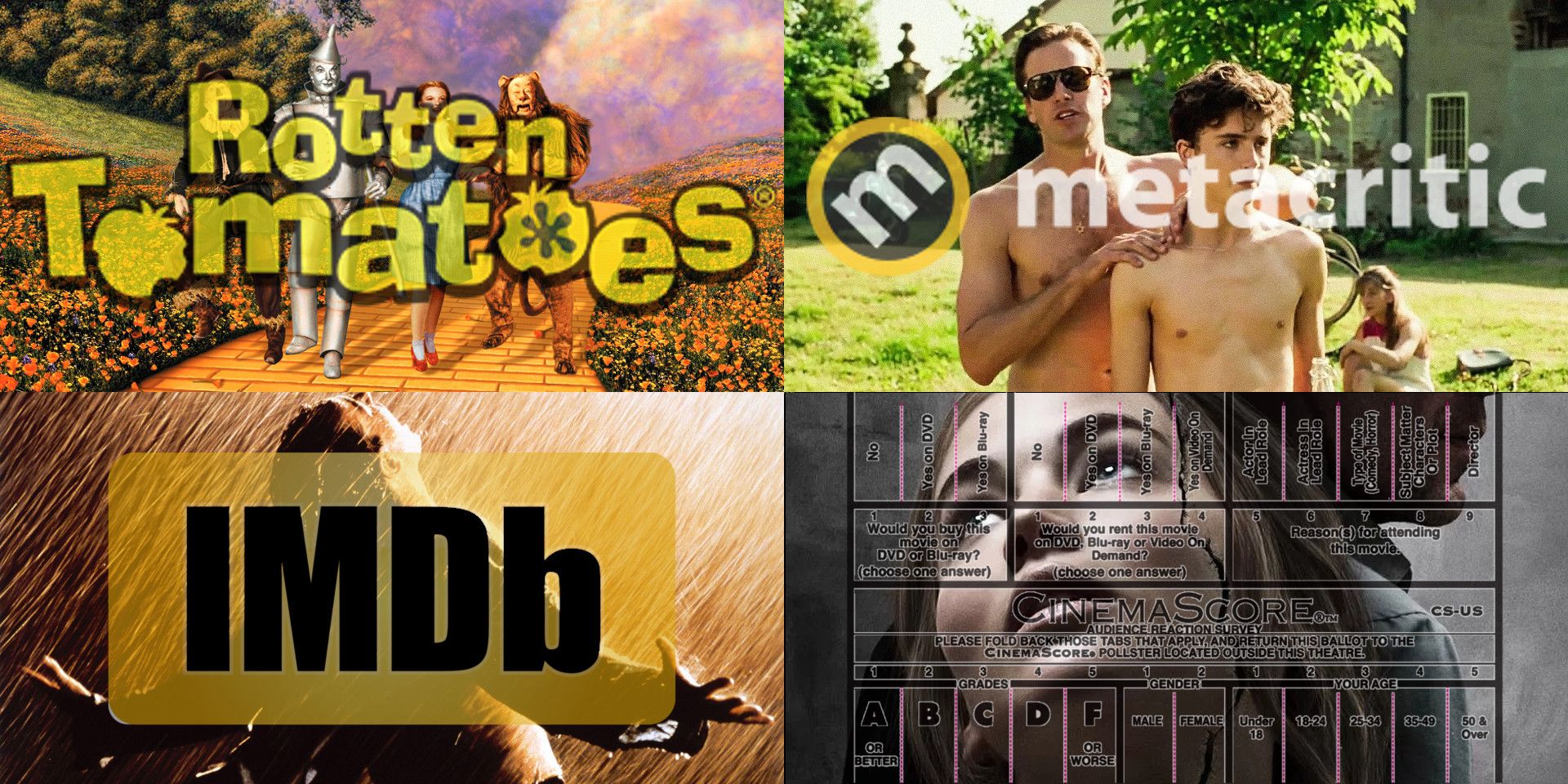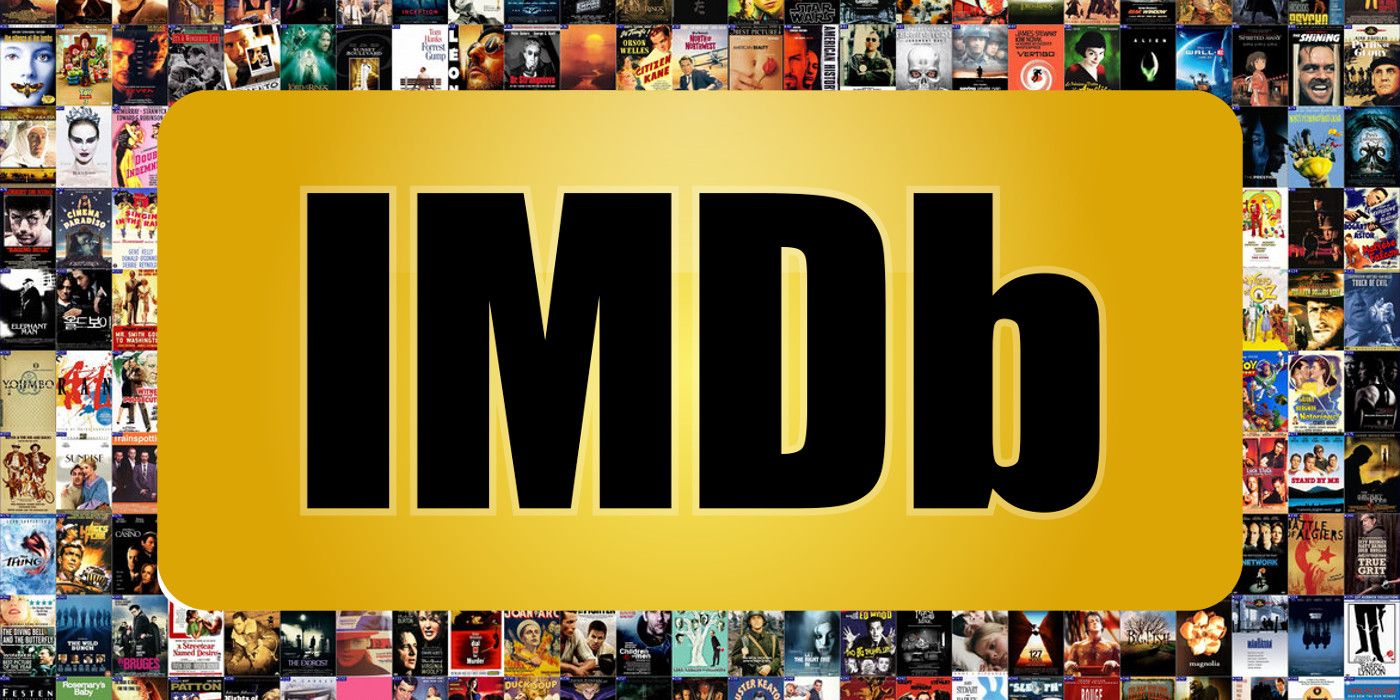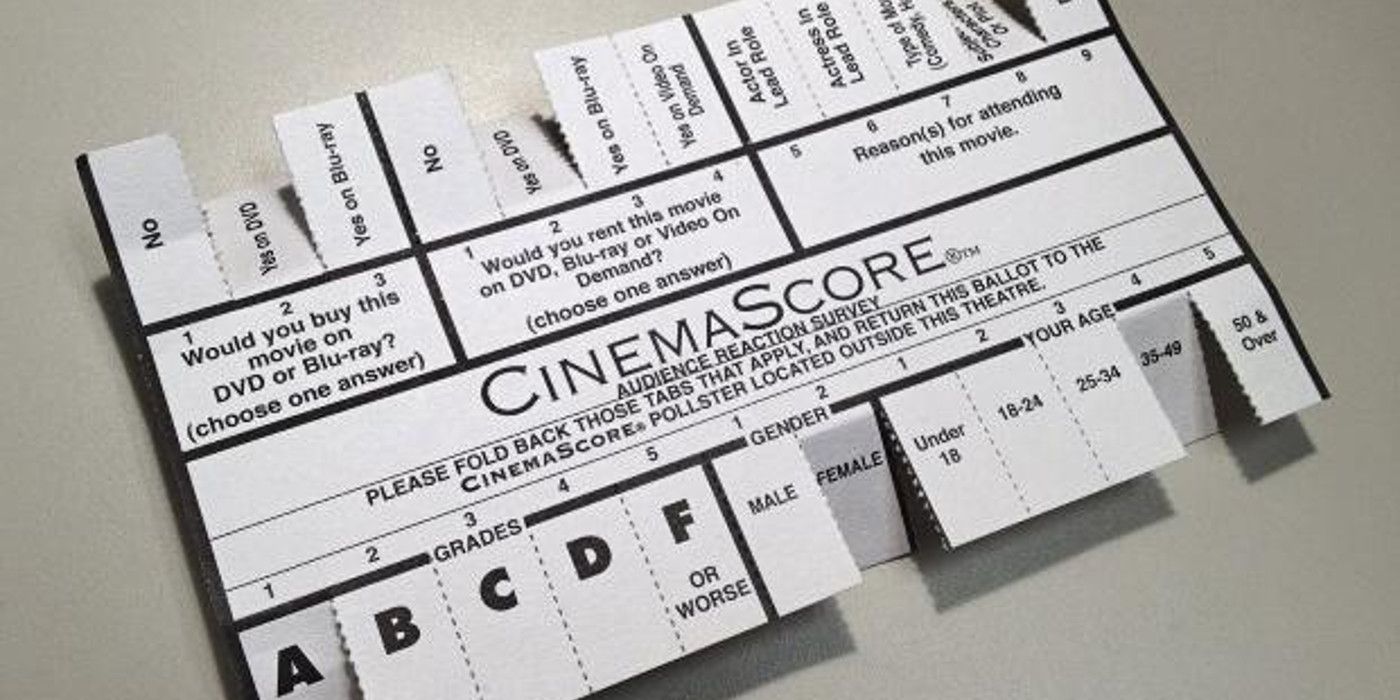Art and story analysis is by no means a recent cultural phenomenon, but thanks to the internet, modern day criticism, partucularly film criticism, is far more widespread, leading to the creation of tools to sort and present data to quantify various qualities about movies. The most prevalent of these tools is obviously Rotten Tomatoes and the Tomatometer, but Metacritic, IMDB, and CinemaScore are also commonly referenced.Of course, because film is a subjective medium, using "objective" numerical values to represent a movie's cumulative critical evaluation rubs many people the wrong way. Rotten Tomatoes, for example, regularly finds itself at the center of audience controversy for ranking a given film too high or too low. It's an understandable disagreement; it's impossible to take a variety of differing opinions, turn those opinions into data, average that data out, and suggest that equation represents a "definitive" opinion, when in reality that average only coincides with the opinions in the middle of the road. So if there are three groups of critics - one that views a film poorly, one that is neutral, and one that sees a film positively - the average opinion is going to land somewhere closer to the neutral ground where it finds itself in disagreement with 2/3's of the sampled critics. This middle ground becomes more narrow for movies with a strong consensus amongst critics and broader for polarizing films.Some tools lean into that difference, while others try to apply even more math to make the divide less significant, but unless there is a rare unanimous opinion, there can't be an objective way to establish a consensus (even by average) when the subject matter is subjective. Fortunately, despite being pointed to as arbiters of quality, that's not something any of these tools are intended to be. Rotten Tomatoes, Metacritic, IMDB, and CinemaScore all have widely different methods of analysis, and their reported numbers mean something totally different about a given film.Even so, audiences will commonly cite these figures as proof of what movie is good or bad, and sometimes the response will be to cite the numbers from another tool, saying "see, Metacritic is better than Rotten Tomatoes" when, in fact, each scale is totally different and comparing the two is like comparing tomatoes and oranges. Each tool has a very different and distinct objective in its reporting, so in order to fully understand what each review aggregator score means, we're going to look at the method of reporting and the implications of the results when it comes to movie quality.
Page 1: Intro (this page)
Rotten Tomatoes
https://www.rottentomatoes.com
Method: The Tomatometer, Rotten Tomatoes' ranking system, draws on a pool of around 3,000 professional movie critics who meet a certain set of criteria. All reviews are parsed and distilled from a traditional point or star system of 5 or 10 stars into a single, simple, thumbs up or thumbs down review - "fresh," or "rotten." This gives all positive reviews from "it was ok" to " the number one greatest film of all time" a flat score of 1/1 and all negative reviews from "meh" to "I feel dumber having experienced that" a score of 0/1.
Critics are typically the ones to indicate their fresh or rotten stance (in addition to their own more nuanced star or number scoring), but Rotten Tomatoes staff also evaluates certain reviews and assigns the fresh or rotten value themselves, allowing critics to appeal if they think the ultimate fresh/rotten determination is wrong.
Once every review has been distilled into the positive 1/1 or negative 0/1, they are averaged out and given a percentage score to indicate what percent of critics gave it a thumbs up (regardless of enthusiasm) versus a thumbs down (again, regardless of enthusiasm). The resulting percentage is then assigned a fresh or rotten value, with 0-60% scores being rotten and 60-100% scores being fresh. In addition, if a movie has a steady Tomatometer score over 75% after a certain threshold (depending on the size of release), it is labeled as the more prestigious "certified fresh."
Indications: Rotten Tomatoes is a great system for anyone that doesn't follow movies in-depth prior to release and just wants quick suggestions before going to the theaters. This audience is usually people that don't go to the movies as often and don't want to "waste" a trip to the theater on something they don't enjoy. As such, despite the seemingly broad 0-100% range in the scoring, the Tomatometer is ultimately a simple thumbs up or thumbs down with the higher or lower percentage simply indicating strength of consensus among critics, not the actual degree of quality.
While this binary fresh/rotten approach to grading films offers theatergoers a simple reference for what to see or not see, it does have some blind spots. First, the results are, understandably, easy to misinterpret. Most scales that depict a score on a percent scale in the rest of the world, such as employee evaluations, standardized testing, and etc. indicate quality, so many people see scores that approach 0% as "extremely bad" and 100% as "extremely good" when the extremity, in fact, only indicates critic consensus. The scoring doesn't differentiate between 100% of critics finding a movie "pretty good" and 100% of critics finding a movie "amazing." On the flip side, it also can't differentiate between 100% of critics finding a movie "mediocre" (earning it a 0%) or 100% of critics finding a movie to be an affront to the art of cinema (also earning a 0%), meaning, for all intents and purposes, it's still just a basic thumbs up or thumbs down system.
In this same fashion, the middle percentages are especially hard to interpret, as the 40-60% range, all of which are graded as rotten, aren't saying 100% of critics scored it at 40-60%, it's indicating that only 40-60% of critics were positive in any capacity, meaning the middle range indicates that critics are polarized, with the most mediocre movies actually falling below the 40% mark.
Metacritic
Method: Metacritic curates reviews from a number of sources they consider to be of high quality, reading every review in detail, and assigning a score based on a scale of 0-100. This means multiplying the scores of sites that already use other numerical scales, such as 0-4 stars, 0-5, or 0-10, but it also means translating an A-F grading system into a 100 point equivalent, or coming up with a score for any of their critics that don't use a scoring system.
Once every review is assigned a score on the 0-100 scale, certain scores are weighted to account for quality and other factors. For example, before his passing, a critic like Roger Ebert's score would typically be seen as having more weight, so his score would be given more weight. Meanwhile, sources whose reviews trend in a consistent direction may need to be adjusted against their own average so they can be fairly compared against each other. For example, a score of 80 isn't going to mean the same thing from a critic who's average score is 50 as it will from a critic who's average score is 85. Once all scores are weighted, an average is calculated and sorted into one of three colors, red for 0-39, yellow for 40-74, and green for 75-100.
Indications: Because Metacritic's scale is an actual average of the critical score, not a simplified indication of fresh/rotten like Rotten Tomatoes, there tends to be a lot less volatility in its rating system. Overwhelmingly loved movies rarely jump over 90, with only 140 movies in history hitting that level or higher. Likewise, divisive movies don't suffer as much as they do under the Tomatometer, and no movies in their catalog of over 10,000 titles have a score of 0, and only 3 films have a score of 1.
The benefit of Metacritic's system is a much more nuanced score. While Rotten Tomatoes tells you the degree of consensus amongst critics, Metacritic actually provides a better indication of quality beyond rotten/fresh. The weighting also ensures that the curve isn't thrown by critics that have a tendency of being overly positive or overly negative. The smaller pool of sources also means every review is the cream of the crop and not subject to any questionable sources.
The drawback is that Metacritic's more limited selection of critics means it's unlikely your favorite writer or YouTuber is factored into their score. That doesn't mean the score isn't accurate, it just means the voice you trust the most may not be influencing the overall score. That being said, if your preferred source is excluded, you can obviously still reference their take on the film directly.
IMDB
Method: When most people think of IMDB, they think about the database where they can look up an actor's filmography or try to remember who played that one obscure character in that old TV show, but IMDB's rating system is actually fairly widely used and cited by some moviegoers. It might not be the most scientific or reliable, but with the frequency IMDB is used as a tool for looking up information about movies, actors, directors, and etc, its rating system is frequently front and center.
The IMDB rating system is almost entirely user-driven. Each registered user can vote on a movie using a star system to assign 0-10 stars to any given film. Those scores are then trimmed and adjusted to account for extreme outlier votes (usually excess votes in the 0 or 10 categories) so that they have less of a significant impact since they're typically more hyperbolic. Voters are also weighted based on their voting trends in order to balance results, so users that trend higher are scaled down and users that trend down are scaled up to create a semblance of equity between every vote cast. Users can also change their scoring at any time (although still just one score per film), so the cumulative score of a movie isn't locked upon release.
Indications: Because voting is open to anyone with an IMDB account, movie scores can vary wildly, but IMDB does its best to wrangle in extremities. Since it doesn't rely on critical evaluation, it's far more of an indicator of popularity than it is actual quality. The place where IMDB's score is most worthwhile is in the top 250. While many people take issue with the ratings of some specific movies, the top 250 is a great collection of near-universally loved classics. It's not complete, and the exact rankings are obviously open to debate, but it's a good bet that most people's favorite mainstream movie is listed there.
The biggest flaw is the most obvious: Since voting is open, it's very prone to brigading by people that want to inflate or deflate the rankings of specific movies. While IMDB's ranking formula does try to cut down on this, it does throw off the scores for some movies by a number of points. This typically occurs with more controversial movies, so even when it influences the score by a point or two, it's not enough to significantly throw of the ranking in the top 250. The reliance on audience voting also means that less well-known movies are more susceptible to voting swings while favorites are far more fixed.
CinemaScore
Method: Like IMDB, CinemaScore comes entirely from audiences, but the score collection method is the most unique of all the scoring systems. During release weekend, CinemaScore sets up polls at theaters around the United States and collects ballots from people who just saw new releases. These ballots collect data on a number of categories, including audience demographics, interest in seeing the movie again when it's released for home viewing, and, the data everyone pays the most attention to, a grading of the movie from A-F.
Since CinemaScore exclusively polls audiences and gathers the score in the theater, the CinemaScore grade is highly indicative of the moviegoing experience. While other scores allow audiences and critics time to review, digest, and evaluate, CinemaScore catches them on the high or low of having just seen the credits roll, and is typically a good benchmark for the kind of experience the general audience can expect upon seeing a given movie.
Indications: While CinemaScore is a good indicator for the average moviegoer, it's not without its blind spots. First, It's not very useful for cinephiles or genre fans. While a particular movie might hit all the notes wanted by a particular fanbase, or scratch a specific genre itch, audiences that aren't looking for those same qualities can be lost, confused, or bored, and that will reflect in their CinemaScore ranking. Second, it favors more popcorn entertainment style movies where the audience leaves the theater in a good mood having just been thrilled and entertained for a couple of hours. Movies that are long, abrasive, overly complex, depressing, or just require some silent contemplation to process don't always reflect well on the CinamaScore. The most recent example of this is Darren Aronofsky's mother!.
As of this writing, mother! is at 68% on Rotten Tomatoes, 75 on Metacritic, 6.8/10 on IMDB, and an abysmal F CinemaScore. The movie is obviously (mostly) well received by critics and some audiences, but its extreme and unnerving style was very disruptive and troubling to many audience members. Even moviegoers who ultimately loved what Aronofky's mother! was doing were shaken and disturbed when leaving the theater - which is when they cast their CinemaScore ballot. This isn't to say CinemaScore is broken or not representative. In fact, the mother! score is exactly representative of what it should be. Audiences will generally not have a good time while watching mother!. That doesn't mean it's a bad movie, it's just not the kind of movie that should be described as "fun," and it's not supposed to be. It's not popcorn entertainment like a comic book movie or a comedy. While it's abnormal, mother! isn't the only movie to get both critical praise and an F CinemaScore, as Killing Them Softly and Solaris both had similar grading.





